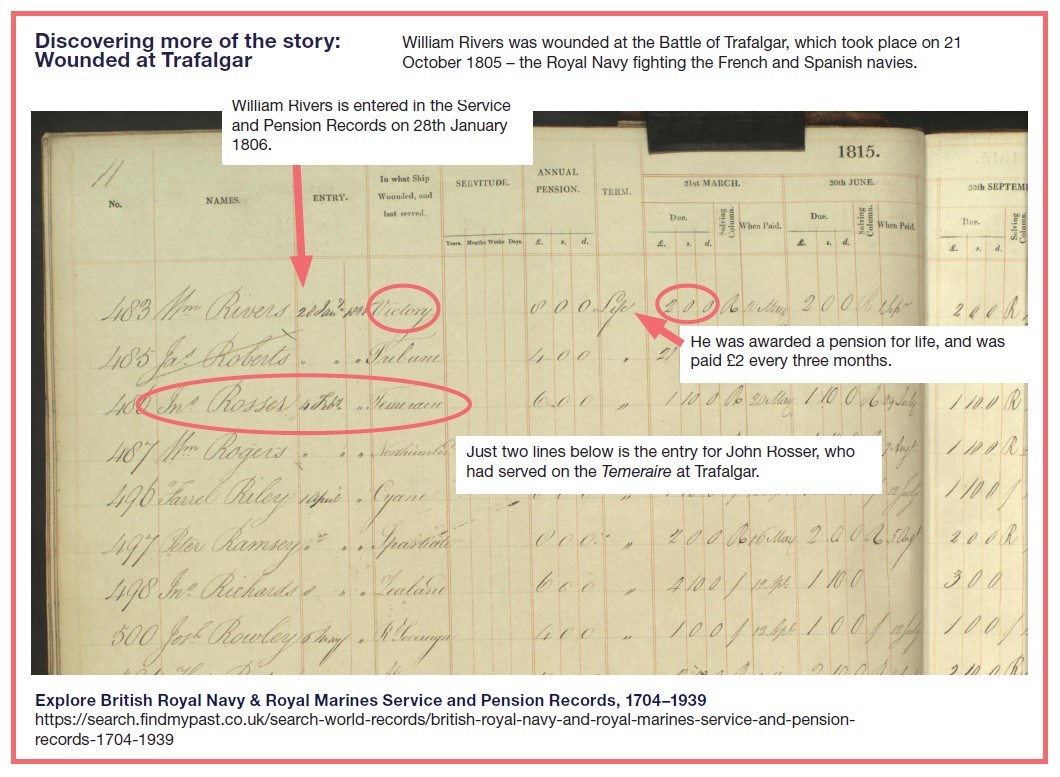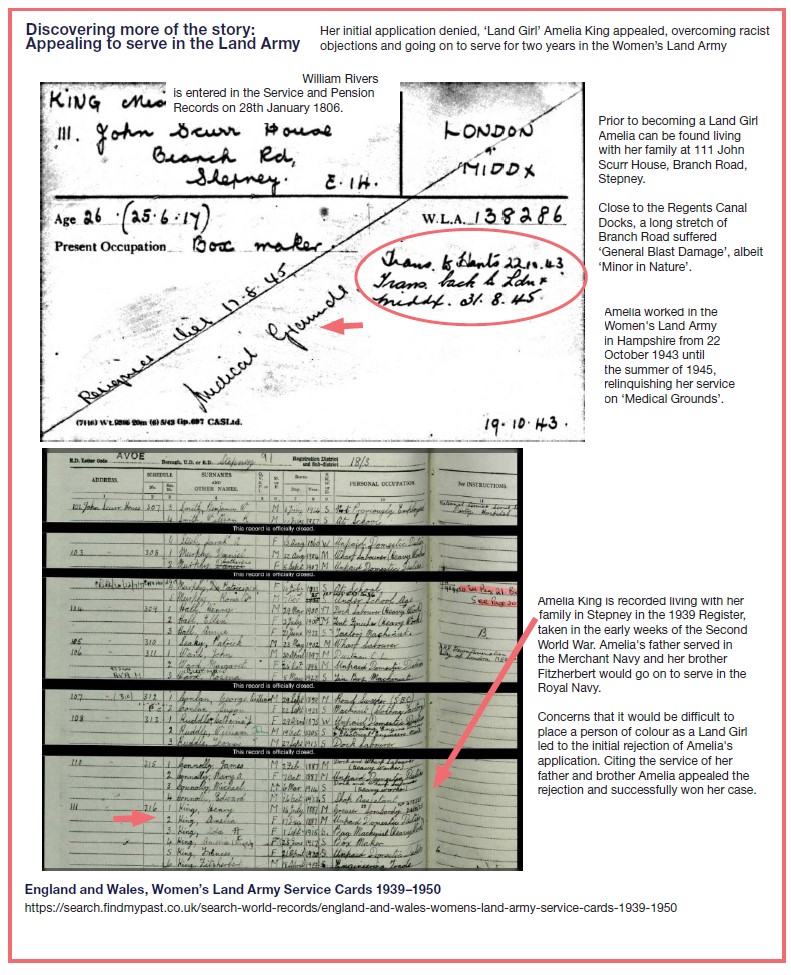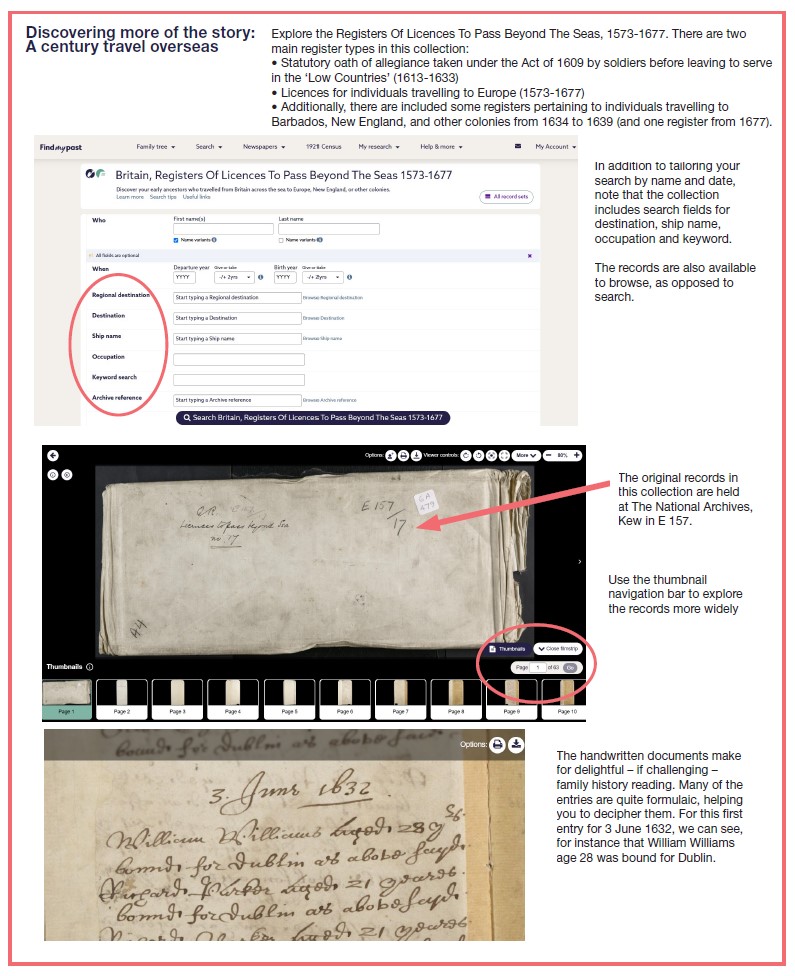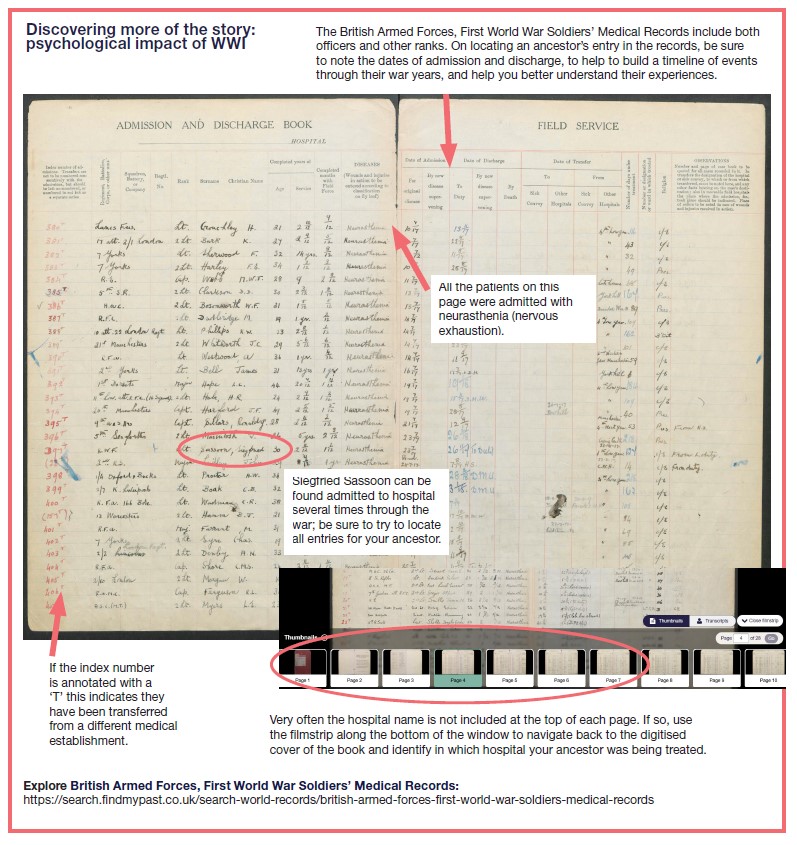From the Battles of Trafalgar and Waterloo, to the Charge of the Light Brigade and the Battle of Britain, the individuals who fought include our family heroes. Discover the stories of the people behind these iconic chapters of military history when delving into the vast collections at Findmypast
Just starting out with military family history research?
If you’re new to family history, and military research in particular, follow these two simple steps:
- Look out for the hints to military records
These are a quick way to discover your ancestors’ war stories when building your family tree on Findmypast.
- Don’t forget to ask relatives
They may have medals, memorabilia, and photos of family in uniform, – giving clues about rank, number, and regiment.

Explore Findmypast military records FREE
To help you research and remember your family heroes, Findmypast are making their collections of 120 million military records* free, from 7 to 13 November 2025.
* Exclusions apply.
Explore the recordsDelving deeper into the military history of your family
Many of the Findmypast collections are detail-rich resources to help you trace clues about individual service personnel – going so much further than just a name, rank and number. Search enrolment records, regimental service records, casualty lists, rolls of honour, deserter and absentee notices, and pension forms, for example.
Note too the collections that provide further insights to your ancestors’ war experiences (such as the Operations Record Books and Combat Reports).
A Battle of Britain hero
Battle of Britain fighter pilot Josef Franczisek, a Czech serviceman, flew Hawker Hurricanes in 303 Squadron, a Polish squadron that played a vital role in the Battle of Britain.
To follow is a small excerpt, in his own words, from Josef Franczisek’s report dated 9 September 1940, near Beachy Head:
As I broke away one ME 109 attacked me from above, and another from below. I hid again in the clouds and flew towards France to keep under cover. Over the Channel I climbed out of cloud and was hit by four ME shells, one in the Port wing, one through the left tank which did not catch fire, and one through the radiator.
It is only due to the armour plating behind me that the fourth shell did not kill me. Two Spitfires came to my rescue and shot down the ME 109 which was apparently the one which had hit me. I saw the damage which had been done, and was obliged to find a landing place as the engine temperature was mounting dangerously.
On a little hill North East of Brighton, I found a field of cabbages and made an excellent landing. The Police came immediately – not only did they not ma[ke] any difficulty, but they were very kind to me. They anchored the Hurricane, shut off the petrol and oxygen and left the place guarded by a policeman. They took me by car to Brighton and I returned to Northolt by train.
Sgt. Wunsche’s parachute was at the Police Station; I brought mine home.
At the railway station the people were very kind to me, and girls gave me some chocolate, and people photographed me. I am very grateful for the kindness which was shown my by everybody.
Sergeant Wunsche was a Polish pilot in 303 Sqdn who was shot down that day, but survived and continued to serve. Two days later, Sergeant Franczisek was back in the air again – destroying one HE III and two ME 109s.
You can find leads to combat reports at Findmypast to find out what happened.
Click here to explore Royal Air Force Combat Reports 1939-1945
We explored just some of the military records at Findmypast and found some remarkable stories, detailed below. Why not start your own search and see what your ancestors did during wartime?
British Armed Forces, First World War Soldiers’ Medical Records
These records cover officers and other ranks, detailing wounds, illnesses, and treatments.
# Records: 1,378,307. Search British Armed Forces, First World War Soldiers’ Medical Records
The British Armed Forces, First World War Soldiers’ Medical Records include both officers and other ranks. On locating an ancestor’s entry in the records, be sure to note the dates of admission and discharge, to help to build a timeline of events through their war years, and help you better understand their experiences.
- In the record shown below we can see that all the patients on this page were admitted with neurasthenia (nervous exhaustion).
- War poet, writer and soldier, Siegfried Sassoon, can be found admitted to hospital several times through the war; be sure to try to locate all entries for your ancestor.
- If the index number is annotated with a ‘T’ this indicates they have been transferred from a different medical establishment.
- Very often the hospital name is not included at the top of each page. If so, use the filmstrip along the bottom of the window to navigate back to the digitised cover of the book and identify in which hospital your ancestor was being treated.
British Army Service Records, 1760-1939
Discover physical descriptions, next of kin, conduct reports, and details of injuries or illnesses.
# Records: 8,169,590. Search British Army Service Records, 1760-1939
The record below reveals more details about The Battle of New Orleans 1815. The Battle of New Orleans saw an American victory over the British, and a quarter of the British force of c8.000 men dead, wounded, missing or captured.
- The place of birth is provided on soldiers' service records, which is a useful piece of information to cross-check that you have the correct person, not a namesake.
- Your ancestor’s service record will provide precise details for period of time during which they served in the Army (in years and number of days).
- This soldier served in two regiments – the 93rd and the 79th.
- He would have been roughly 41 years old when he was discharged as being ‘worn out’ in 1828. (The date of 1828 is provided at the bottom of the form).
- He enlisted in the 79th in July 1815 when he was aged 28, but the records show that he had already served in the 93rd (from 1807 to 24 May 1815) – and it was while he was serving with the 93rd that he sustained his injury to his leg.
- William Grant was one of the 2,027 British servicemen dead, wounded, missing or captured at the Battle of New Orleans. See an excerpt from his service record, found on Findmypast, below.
British Royal Navy & Royal Marines Service and Pension Records, 1704–1939
Detail everything from first postings to retirement pensions, and next of kin, these records trace lifetimes spent at sea.
# Records: 1,340,591. Search the British Royal Navy & Royal Marines Service and Pension Records, 1704–1939
This intriguing record details events at the Battle of Trafalgar.
- William Rivers was wounded, while serving on HMS Victory, at the Battle of Trafalgar, which took place on 21 October 1805 – the Royal Navy fighting the French and Spanish navies.
- William Rivers is entered in the Service and Pension Records on 28 January 1806.
- He was awarded a pension for life, and was paid £2 every three months.
- Just two lines below is the entry for John Rosser, who had served on the Temeraire at Trafalgar.

British Army Lists & Commission Registers 1661–1826
For officers of the early modern army, these lists record appointments and promotions, tracing careers over time.
# Records: 118,541. Search British Army Lists & Commission Registers 1661–1826
The Army List entry shown below, from 1802, includes Arthur Wellesley, the future Duke of Wellington.

England and Wales, Women’s Land Army Service Cards 1939–1950
Records of the women who kept Britain fed during and after the Second World War.
# Records: 161,196. Search England and Wales, Women’s Land Army Service Cards 1939–1950
The following records show the remarkable story of Amelia King, who was initially told she was not allowed to become a 'Land Girl'.
- Her initial application denied, ‘Land Girl’ Amelia King appealed, overcoming racist objections and going on to serve for two years in the Women’s Land Army.
- Prior to becoming a Land Girl Amelia can be found living with her family at 111 John Scurr House, Branch Road, Stepney. Close to the Regents Canal Docks, a long stretch of Branch Road suffered ‘General Blast Damage’, albeit ‘Minor in Nature’.
- Amelia worked in the Women's Land Army in Hampshire from 22 October 1943 until the summer of 1945, relinquishing her service on ‘Medical Grounds’.
- Amelia King is recorded living with her family in Stepney in the 1939 Register, taken in the early weeks of the Second World War. Amelia's father served in the Merchant Navy and her brother Fitzherbert would go on to serve in the Royal Navy.
- Concerns that it would be difficult to place a person of colour as a Land Girl led to the initial rejection of Amelia's application. Citing the service of her father and brother Amelia appealed the rejection and successfully won her case.

Britain, Registers of Licences to Pass Beyond the Seas 1573–1677
These early registers provide rare insights into soldiers and adventurers of the Tudor and Stuart eras, charting the beginnings of Britain’s long military presence overseas.
# Records: 27,796. Search Britain, Registers of Licences to Pass Beyond the Seas 1573–1677
There are two main register types in the Registers Of Licences To Pass Beyond The Seas, 1573-1677:
- Statutory oath of allegiance taken under the Act of 1609 by soldiers before leaving to serve in the ‘Low Countries’ (1613-1633)
- Licences for individuals travelling to Europe (1573-1677)
Additionally, there are included some registers pertaining to individuals travelling to Barbados, New England, and other colonies from 1634 to 1639 (and one register from 1677).
- In addition to tailoring your search by name and date, note that the collection includes search fields for destination, ship name, occupation and keyword. The records are also available to browse, as opposed to search.
- The original records in this collection are held at The National Archives, Kew in E 157.
- Use the thumbnail navigation bar to explore the records more widely.
- The handwritten documents make for delightful – if challenging – family history reading. Many of the entries are quite formulaic, helping you to decipher them. For this first entry, below, for 3 June 1632, we can see, for instance that William Williams age 28 was bound for Dublin.

Begin your FREE access to the military records on Findmypast today
With 120 million military records, spanning the 16th to the 20th centuries, Findmypast provides online access to name-rich records for piecing together the story of your individual ancestor's military service, and further records to help you delve deeper into their stories.
Research and remember your family heroes with the military collections* at Findmypast, available free, 7-13 November 2025. Explore the records FREE at Findmypast.
* Exclusions apply.

Begin your FREE access to the military records on Findmypast today
With 120 million military records, spanning the 16th to the 20th centuries, Findmypast provides online access to name-rich records for piecing together the story of your individual ancestor’s military service, and further records to help you delve deeper into their stories.
Research and remember your family heroes with the military collections* at Findmypast, available free, 7–13 November 2025.
* Exclusions apply.
Explore the records









